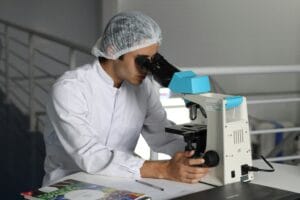
Stem Cell Therapy – what is it?
A Revolutionary Approach to Healing
Stem cell therapy has emerged as a groundbreaking medical field, offering hope for patients with a wide range of conditions. This innovative approach involves the use of stem cells to repair damaged tissues and organs. Stem cells are unique cells that have the potential to develop into different types of cells in the body. They can be found in embryos, fetuses, infants, children, and adults.
What are Stem Cells?
Stem cells can be classified into two main types – embryonic stem cells and adult stem cells.
- Embryonic stem cells are derived from embryos and have the ability to differentiate into any type of cell in the body. They are considered pluripotent, meaning they are highly versatile.
- Adult stem cells are found in various tissues and organs, such as bone marrow, blood, skin, and fat. They are typically more limited in their differentiation potential compared to embryonic stem cells, but they can still regenerate specific cell types.
How does this procedure work?
This procedure involves the following steps
- Harvesting stem cells – Stem cells can be obtained from various sources, including bone marrow, adipose tissue (fat), and umbilical cord blood.
- Preparing the stem cells – The harvested stem cells are processed and prepared for transplantation.
- Administering the stem cells – The prepared stem cells are injected into the affected area or directly into the bloodstream.
- Stem cell differentiation and repair – The transplanted stem cells migrate to the damaged tissue and differentiate into the appropriate cell types. These cells then help to repair and regenerate the damaged tissue.
Benefits of this procedure?
This procedure offers numerous potential benefits, including
- Regeneration of damaged tissues – Stem cells can help to repair and regenerate damaged tissues, such as those affected by injury, disease, or aging.
- Treatment of chronic conditions – Stem cell therapy has shown promise in treating a variety of chronic conditions, including autoimmune diseases, neurological disorders, and cardiovascular diseases.
- Reduced inflammation – Stem cells can help to reduce inflammation, which is a key factor in many diseases.
- Improved function – Stem cell therapy can improve the function of damaged organs and tissues.
- Minimal side effects – Stem cell therapy is generally considered a safe procedure with minimal side effects.
Stem cell therapy has been explored for a wide range of medical applications, including
- Orthopedic conditions – Treatment of injuries such as torn ligaments, cartilage damage, and bone fractures.
- Neurological disorders – Treatment of conditions such as Parkinson’s disease, Alzheimer’s disease, and spinal cord injuries.
- Cardiovascular diseases – Treatment of heart failure, myocardial infarction, and peripheral artery disease.
- Autoimmune diseases – Treatment of conditions such as multiple sclerosis, rheumatoid arthritis, and type 1 diabetes.
- Cancer treatment – Support of bone marrow transplants and potential direct treatment of certain cancers.
The primary reason people seek this procedure is to promote healing and regeneration of damaged tissues.
Stem cells possess the unique ability to differentiate into various cell types, making them potential candidates for repairing tissues affected by injury, disease, or aging. This versatility offers hope for individuals with conditions that were previously difficult to treat.
What is the main reason for people undertaking this procedure?
Here are some specific reasons can include
- Treat chronic conditions – Stem cells can potentially address conditions like autoimmune diseases, neurological disorders, and cardiovascular diseases.
- Repair damaged tissues – They can help repair damaged tissues in organs like the heart, brain, and joints.
- Regenerate cells – Stem cells can regenerate cells that have been lost or damaged due to injury or disease.
- Reduce inflammation – They can help reduce inflammation, which plays a role in many diseases.
- Improve organ function – Stem cell therapy may improve the function of damaged organs.
It’s important to note that while this procedure holds great promise, it’s not a cure-all. The effectiveness can vary depending on the condition, the source of the stem cells, and individual factors. It’s crucial to consult with a qualified healthcare professional to determine if stem cell therapy is appropriate for your specific needs.
Future of Stem Cell Therapy
Stem cell therapy is a rapidly evolving field with great potential. Ongoing research is exploring new applications and improving the effectiveness of this innovative treatment. As scientists continue to unravel the complexities of stem cell biology, we can expect to see even more exciting developments in the future.
It is important to note that while stem cell therapy holds great promise, it is not a cure-all. The effectiveness of stem cell therapy can vary depending on the condition being treated, the source of the stem cells, and other factors. It is essential to consult with a qualified healthcare professional to determine if stem cell therapy is appropriate for you.